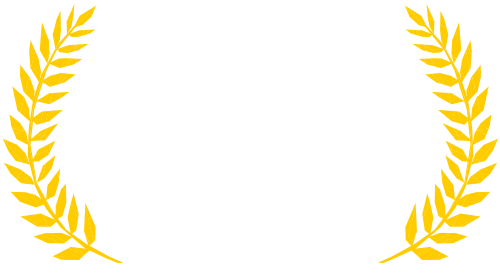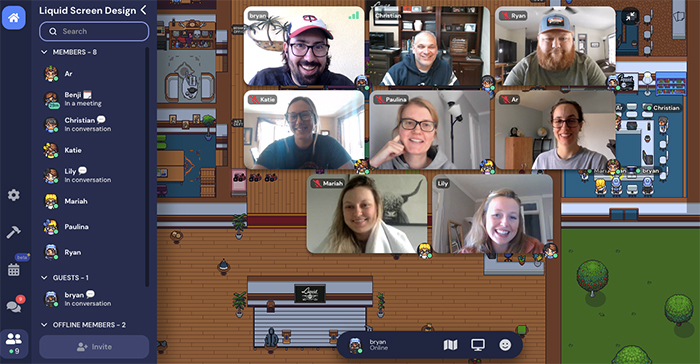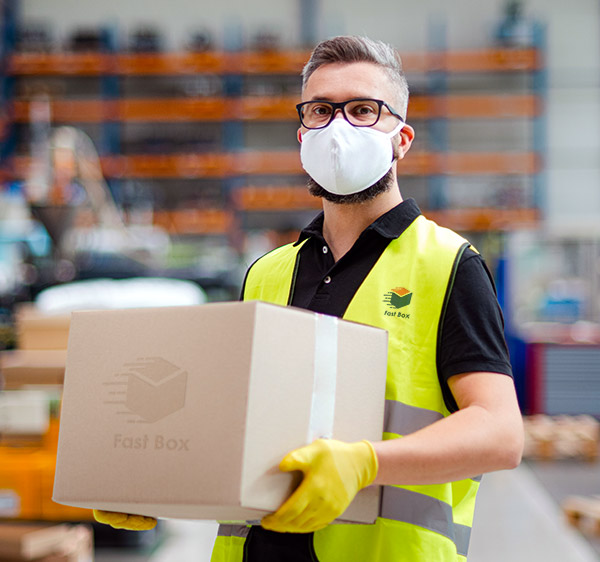For hundreds of years, people have traveled to an office to work. According to author Witold Rybczynski, professionals such as lawyers and civil servants in cities like London and Paris began to work in these centralized spaces in the 17th century.
Since then, the office remained the professional center of the universe. But in 2020, COVID changed that. It didn’t birth something completely new. Instead, it accelerated change that was already taking place by revisiting the pre-industrial “old way” of working, but with a technological twist.
Employees have long appreciated generous compensation and benefits, but even more so, they longed for flexibility and “work from anywhere” policies. Before COVID, though, traditional workplace culture had been slow to adjust. That’s changed over the past two years, as people expect flexibility, understanding and respect in order to contend with an unprecedented situation.

22
The number of companies out of 50 that are on the Best Places to Work list for the first time.
And if those needs aren’t being met, people have no problem leaving. While the exact nature of “The Great Resignation” or “The Great Reshuffling” is still being determined, one thing is undeniable: quits were up considerably last year. According to the Bureau of Labor Statistics (BLS), 776,000 workers in professional and business services, the largest “white-collar” sector of the workforce, left their jobs in December 2021, just behind trade, transportation and utilities (1.04 million) and leisure and hospitality (906,000).
Counselor Best Places to Work
Meet the 50 promo companies thriving in the digital age.
The most recent data from the BLS shows that 4.3 million people left their jobs in December – down from a record 4.5 million in November, but still significantly high.
Among the reasons: overwork and poor workplace environments. A survey in August by financial services company Bankrate found that 55% of working Americans were likely to look for a new position over the next year. Most said they wanted better pay, career progression, flexibility and a non-toxic work environment.
“It’s a different relationship now with employees – it has to be a dialogue.” Kate Hallett, Harper + Scott
Corporate America knows it’s less expensive and time-consuming to keep an employee than to hire a replacement. Minimizing turnover helps performance, productivity and the bottom line. So companies set about making themselves a place where people want to be – a great place to work. Many started with the most seemingly obvious things, like generous compensation and benefits. Others turned to exciting perks: free food, happy hours, incentive trips and tricked-out breakrooms with arcade games.
COVID’s limits on in-person interaction laid bare a fundamental truth. While employees enjoy pizza, ping-pong and palm trees, they care more deeply about the intangibles: individual support, communication, recognition and trust. The pandemic made them non-negotiable, and a workers’ job market meant employees were empowered to make a change. Professionals know: the fundamental notion of where, how and why work is done has permanently changed. It will continue long after the COVID pandemic recedes into history.
A new precedent’s been set, and the next stage for successful companies is crucial: balancing individual employee care with the bottom line. Those that do will be ready for the post-COVID phase of work.
“It’s a different relationship now with employees – it has to be a dialogue,” says Kate Hallett, CMO at Harper + Scott (asi/220052), a certified B Corp in New York City. “We have to honor the space that people ask for.”
Since 2008, we’ve honored top companies in the promotional products industry with the Counselor Best Places to Work list. We do so again this year, recognizing the 50 best companies. But what’s clear is that what makes a Best Place to Work has irrevocably changed. Meeting the desire for flexibility, communicating clearly, empowering employees – all those qualities were important before. Now, they mean everything.
The Value of Flexibility
While working from home a day or two a week used to be a nice-to-have benefit, it quickly became crucial in the early days of COVID. Organizations that had resisted remote work were soon compelled to offer everyone the flexibility it afforded. And, as it turns out, employees were happier for it.
“Companies found that they were equally productive and profitable if not more so,” says Paul Krismer, a positive psychology expert and speaker on employee engagement. “People were more satisfied with their work/life balance, now that they were entrusted with working outside the office.”
And with that shift came radical attention paid to people’s individual situations, compared to before where the shared office had rendered many of those differences invisible. Some were in quiet homes by themselves, or perhaps with a significant other. Others squeezed in at the kitchen table next to kids and even aging parents. To keep teams intact and satisfied required something other than pool tables and happy hours; employers had to extend grace and let employees operate in a way that worked best for them.
“We’re trying to make work/life balance easier, especially for parents,” says Dave Weintraub, CEO of Pinnacle Promotions (asi/295986) in Norcross, GA. (Pinnacle, along with every other industry company quoted in this article, earned recognition from Counselor this year for being a Best Place to Work.) “We’ve offered flexibility to help employees manage working from home while being teachers, spouses, coaches and chauffeurs. As long as the work continues to get done at the high levels we normally deliver, it’s up to the employee and their manager to determine how and when they do it.”
It marks a significant shift for many companies, which just two years ago still required people to be in the office five days a week within set hours and left it up to each individual to figure out how to balance their personal lives within that framework. Now, employers are expected to be much more accommodating of responsibilities outside of work.
“Before COVID, employers had their ways of doing things and would tweak it when needed,” says Carolina Junghans, managing partner at Blink Marketing (asi/141424) in Franklin, TN. “But you can’t have blanket policies for the group anymore. You have to listen to each department, to each person. It’s a lot more work. You can’t please everyone, but you have to address as many things as possible. Otherwise, they feel stuck.”
Jeff Hall, CEO at iClick (asi/62124) in Seattle, says employees had been conditioned to operate within the workday framework for so long that flex time was a bit of an adjustment. Even before COVID, the company had to mandate that people ate lunch away from their desks.
“Now they have more freedom with their schedules,” he says. “They can get the things of life done during the day. We created an environment where that’s OK.”
Flexibility, which has gradually inched up the ladder of preferred workplace perks in recent years, is now firmly ensconced in the top spot. Tom Goos, president and co-owner of Image Source (asi/230121) in Seattle, is unequivocal. “Flexibility is king,” he says. “The most competitive companies recognize and meet employees where they are. Everyone values different things, but people tend to value time more than money.”
Granted, not every company is working remotely; seven of the 50 companies on this year’s Best Places to Work list are completely in person. Some companies are primarily in office but allow employees to work a day or two from home. Others have production staff on-site with sales and back-office staff working remote. As companies find their equilibrium and perhaps reestablish an office presence, it’s clear that in person doesn’t have to mean inflexible.
“We value family and put that above all else,” says Heather Harris, vice president of Weaver Associates (asi/550019), a distributor and print shop in Lancaster, PA, whose employees are working completely in person. “Employees know that if anything ever arises with their families, that always takes precedence over work, and this will never change.”
Current Work Models for Best Places to Work Companies

Indeed, employers for many years couldn’t quite seem to grasp exactly how much employees valued flex time to, for example, have a sick kid stay at home with them without having to dock PTO and miss a big meeting. Before, that would have long-term impact on careers, says Chris Dyer, founder and CEO of PeopleG2, an all-remote employee background check service in Brea, CA.
“These days, it’s ‘get the job done,’ not ‘get the job done, in front of me, right now,’” says Dyer. “People want so much more than free food and ping-pong. Over the past two years, we’ve jumped 10 years in terms of technology and acceptance of remote work.”
Bridging the Communications Gap
Hand-in-hand with flexibility is regular communication. Workers can receive all the flex time possible, but if they’re not sure that their efforts are serving a higher purpose and their team isn’t communicating with them, they’re still at risk to leave. Remote workers are particularly susceptible to feeling isolated, but in-person workers can also languish in an environment marked by lack of recognition and two-way communication. This becomes especially important in a hybrid environment, where remote workers can feel out of the loop when compared to their in-person counterparts.
“We check in regularly, with a weekly all-hands meeting,” says Logan Altman, director of customer experience at Doing Good Works (asi/222095) in Irvine, CA. “We talk about personal and professional lives and offer praise to individuals and teams for a job well done. We want to make sure everyone is OK.”
At Image Source, Goos and the management team have been intentional about communicating support and letting workers know they’re welcome to ask for what they need. It’s had to be more deliberate during remote work since these conversations tended to take place organically in the office. Managers now have the obligation to bridge the virtual gap.
“These days, it’s ‘get the job done,’ not ‘get the job done, in front of me, right now.’” Chris Dyer, PeopleG2
“Showing you care is honest and transparent,” says Goos. “We check on their mental health while making sure they have the resources to do their jobs. We also deliver thank-you gifts to people’s homes, like slippers they can use while working, and they appreciate that.”
The communal office allowed for more natural interaction, and so while working from anywhere is convenient for many reasons, there’s a clear trade-off: feeling invisible and isolated are real concerns and are often hard to detect until it’s too late and the worker has given notice. Belonging to a tribe is a core psychological need for everyone, says Krismer, so teams need to be intentional about creating community.
On a scale from 1-10 (10 being extremely difficult), how easy or difficult has it been for Best Places to Work companies to find qualified candidates and fill open positions?
5.8

“Create social opportunities and welcome personal conversation,” he says. “Everyone should have their video camera on, and the meeting facilitator needs to call on specific people so they feel included and that their input matters. They need to have one-on-ones more often and have intentional social conversations before talking about work. Tell them exactly how they did a great job and the impact it’ll have on the company’s mission.”
Newfound Employee Empowerment
The core reason for flexibility and communication is employee empowerment. Workers want their employer’s trust that allows them to perform in a way that works for them – within the responsibilities of the role and company policy – while still performing at high levels. COVID widened the cracks of the old, strict hierarchical structure, and employees are capitalizing on it.
Take New York-based Harper + Scott, which was largely an in-person workplace before the pandemic with few exceptions. When COVID hit and everyone was sent home, it marked a radical shift for the company – especially early on with management trusting employees to deliver on PPE, a completely new product category for the distributor.
Almost two years later, it’s officially a hybrid workplace, with some people having already moved out of the Big Apple. And with remote work, performance can’t be monitored in real time; instead, the company begins with trust in their people and analyzes results. “Trust is a huge challenge,” says Hallett, the company’s CMO. “We have to trust that the team knows every aspect of the client’s experience, lead with the employee’s expertise and relinquish control of traditional notions.”
Employees, both remote and in the office, also need permission to self-manage. Despite the common thinking that dominated key institutions – like the workplace – for many years, people don’t revert to bad behavior and take advantage when left unattended, says Krismer. Most realize they can’t just do whatever they want and keep their jobs.
Bryan Goltzman, the owner of Minneapolis-based Liquid Screen Design (asi/254663), is taking me on a tour of the distributor’s new office space. I tag along as he shows me new offices, collaborative meeting spaces, generously sized breakrooms, and even a go-kart track and dog park for employees’ visiting pooches. We stop in on a brainstorming meeting in one of the conference rooms and, for a few minutes, business partner Benji Bearman joins us in Goltzman’s office to talk about the new space and some recent client projects before heading to a meeting.
Sounds like a typical office (well, except for the dog park and go-kart track). But in fact, I’ve never been to Minneapolis. And I’ve never met Goltzman or Bearman in person. Instead, I’m getting a first-hand experience of what Goltzman calls “the future” for remote work: it’s called Gather, a customizable virtual space that simulates a physical workplace.

As companies look to the future of the workplace post-COVID, the most persistent lament is this: while remote teams may have been productive these past two years, what’s sorely missing are the in-office interactions that lead to real relationship-building, trust and a positive work culture.
And I understand that. For two years, I’ve worked remotely and loved the convenience, financial savings and better melding of my professional and personal lives. But one thing is certainly lacking: the natural conversation in the hallways and across cubicle walls that fosters relationships among team members. Fortunately, I went into remote work with well-established connections with my colleagues. I can only imagine how much harder it must be for people starting at a new company.
For all the positives of remote work, there’s still a significant void. It’s one that Gather (along with other similar platforms) looks to fill by allowing for chance collisions with co-workers and more natural socializing, rather than co-workers having to send a Teams meeting invite for every idea-sharing session.
So when Goltzman sang Gather’s praises ahead of the tour, I was skeptical – how can a virtual “Sims”-like environment get close to replicating what we once had? But I was curious. And after an hour in Gather, I’ll tell you: it got pretty dang close.
“We never expected a platform like this to catch on here. But this is the future for remote and hybrid offices. We need impromptu brainstorming and the ability to cross paths. Otherwise, you’re just talking business all the time.”Bryan Goltzman, Liquid Screen Design
Goltzman said the employees at Liquid Screen Design (who’ve been remote well before COVID) were skeptical too. But the launch was successful, and now everyone uses it all day, every day. “It’s created an atmosphere of casual drop-ins,” he says. “People can just walk up to you and start a conversation. We still use Slack, but Gather has replaced Zoom because we wanted more casual brainstorming.”
Employees, represented by customizable avatars, can deck out their digital offices with décor, meet in conference rooms, engage in impromptu idea-sharing in breakrooms, grab a coffee to talk about their weekends and, yes, even challenge each other to a go-kart race.
As you “walk” around the office, you get a bird’s-eye view of the space, which even a communal workplace doesn’t offer. If your co-worker is sitting at a table having lunch in a common area or in their office with the door open, you can approach them and start a conversation. Both users’ videos then kick on so they can speak in a Zoom- or Teams-like format. The platform also indicates if co-workers are on the phone or in a closed-door meeting.
Remote has worked well for Liquid Screen Design since the company’s inception, so Goltzman wasn’t sure what the adoption rate of Gather would be among his team. “We never expected a platform like this to catch on here,” he says. “But this is the future for remote and hybrid offices. We need impromptu brainstorming and the ability to cross paths. Otherwise, you’re just talking business all the time.”
Amidst the ongoing debate about the future of work and the need for a communal office space post-COVID, Gather (despite my initial doubts) seems to be an interesting and, yes, viable alternative. It combines all the conveniences of remote work with critical opportunities to discuss, collaborate and socialize relatively naturally with co-workers. While no virtual platform can be a perfect equivalent to in-person work, those companies looking for a middle-ground solution would do well to check out this and similar platforms on the market. It could just be the win-win they and their employees are looking for.
“Autonomy is a basic psychological need,” Krismer says. “Companies were forced to let go of micromanagement because of COVID. Offer people broad outcomes and then let them do it. It takes a different skillset to be a coach and leader instead of command-control. Everyone is an expert in their area, so bring out their best performance and excellence. A happy workplace is based on trust.”
As companies enter the next phase of work – staying remote, implementing hybrid policies or bringing everyone back – the lessons learned from COVID should inform permanent company policy.
But does that mean remote work for everyone? Workplace analysts are skeptical. Long-term remote work as it’s currently constructed, they say, is not tenable for the masses: there’s the primal human need for in-person interaction and communication that is currently lacking and which many companies are eager to return to. The dilemma for companies is to figure out the balance between the productivity and happiness of employees who work remote and the culture-building benefits of being together in person.
So as much as employees want to forever work from anywhere, the reality is that not every company is going to be forever remote. Yes, there will be more remote jobs available than before COVID. But some companies have already returned to in-person work, and more will once the pandemic has dissipated. Maybe it’s hybrid. Maybe it’s only one or two days a week. Nevertheless, in-person work in some form will make a comeback.
Employees realize that, though they want to keep the flexibility they enjoyed: a January survey by Slack/Future Forum of more than 10,500 workers in the U.S., France, Germany, Japan and the U.K. found that 95% want flexibility in their schedules, even if they’re hybrid or in person.
“The Great Reshuffling will be ongoing,” says Krismer. “The ‘what every employee wants to do’ format won’t work for every company. It’s just too complex. But people will be loyal if their employer earned their loyalty during this time. They might not jump ship if they’re offered specific resources, like on-site daycare.”
Dyer says he anticipates roughly 60% of jobs will be in office and 40% remote when things shake out post-COVID. “There will be more remote jobs available, but people will come back to the office,” he says. “There will be more choice and opportunity.”

